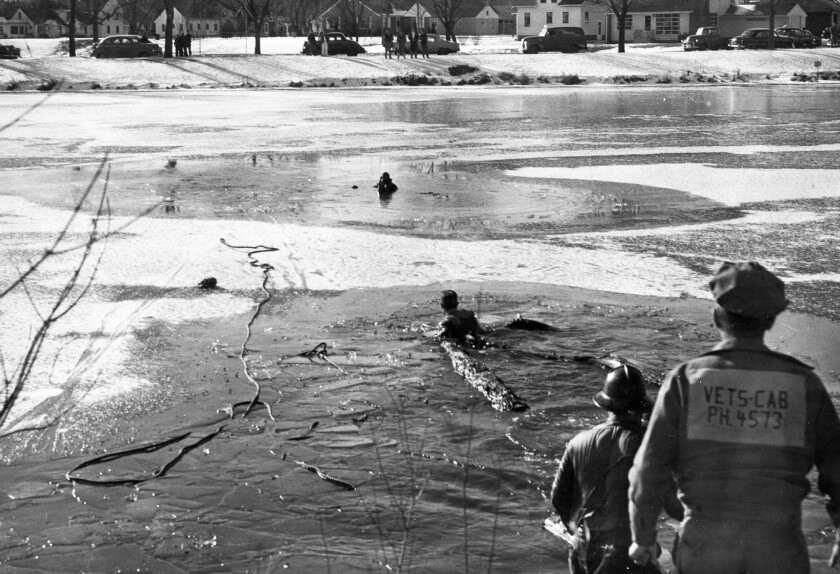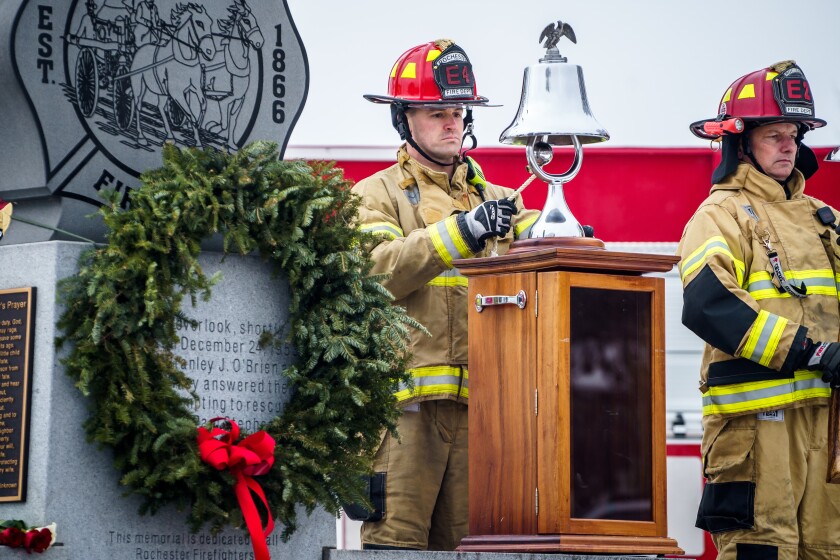In early August of 1942, twenty-one-year-old Mary Sessing (thought everyone called her by her middle name, Margaret) left her home in Rochester and boarded a train heading south. With brown hair she wore pinned in a neat curl over a sweet oval face, Margaret was on her way to meet her sweetheart, Ambrose Riley.
Blue-eyed and handsome, Ambrose was in training at the Army’s Moore Field Air Base in Texas to fly single-engine planes. Perhaps knowing he’d soon be deployed, Ambrose had asked Margaret to come to Texas. He had asked her to marry him.
On August 5, amid the humid skies and citrus groves of the Rio Grande Valley, Ambrose and Margaret married at the Army base chapel. That same day, he received both his wings and his commission.
For a few months, the couple lived together on a base in Florida before Ambrose was assigned to the 320th Bomb Group, 441st Squadron. He left for North Africa on December 1, 1942, to fly missions in a B-26 Marauder.
The Marauder—fast, compact, and heavily armed—was nicknamed “The Widow-Maker.” A clipping from an Associated Press story Margaret saved at the time describes the plane flying “like a bumblebee but packing the wallop of a mule.” The AP story, filed from a bomber base in Algeria, even quoted Ambrose himself: “Those engines really have power—the best on any bomber.”

For the next five months, Ambrose completed more than 25 bombing missions, targeting strategic points—rail yards, bridges, viaducts, harbors, and airfields—across Italy. At some point during that period, he reunited with his younger brother, Billie Riley, who was in the Merchant Marine, on a visit to a base in Tunisia. In Minnesota, their brief reunion earned a headline in the Post Bulletin: “Two Brothers, Parted 2 Years, Meet at Front.”
Then came August 21, 1943.
While flying a mission over the Villa Literno rail yards near Naples, Italy, Ambrose’s bomber was shot down. His co-pilot was killed. Weeks later, Margaret received a Western Union telegram. Typed out in a soft-blue ink, the news:
MRS MARGARET S RILEY
ADVERTISEMENT
I REGRET TO INFORM YOU REPORT RECEIVED STATES YOUR HUSBAND FIRST LIEUTENANT AMBROSE J RILEY MISSING IN ACTION SINCE 21 AUGUST IN THE NORTH AFRICAN AREA …
The farm kid in Stalag Luft III.
Ambrose Riley was born on September 21, 1915, near Hammond in southern Minnesota. He grew up on the family farm with eight brothers and sisters. They raised dairy cattle, pigs, and chickens, ate apples right off the trees around the yard and sold eggs. Lifetime hobbies he learned at a young age: tinkering with tools, fixing things on the farm, playing baseball. Graduated from Rochester High School, took classes at Rochester Junior College (and joined the gymnastics club).
Ambrose met his future wife Margaret in 1940 through his sister, Bernadette. Bernadette and Margaret both worked at Lyman’s, a ladies’ department store in downtown Rochester. Bernadette apparently didn’t like the woman Ambrose was dating at the time, so she introduced him to her friend. Soon love was in the air.

In September 1940, still over a year before the United States would formally enter World War II, Ambrose enlisted in the U.S. Army Signal Corps before transferring to the Army Air Corps. Ambrose and Margaret were separated for much of that time.
Then came their marriage, and Ambrose's assignment overseas.
In September 1943, nearly two months after Ambrose’s plane was shot down over Italy, Margaret received a second telegram. With it came a fragile kind of relief: Ambrose had survived and was being held in a German POW camp—Stalag Luft III.
Set 100 miles southeast of Berlin in Poland, the 900 guards of Stalag Luft III oversaw 10,000 or so prisoners, all Allied airmen. One of Riley's fellow barracks mates, Pete Hansen, described their room as "bunk beds with wooden slats and straw mattresses. There were ten combines of eight men living in each barracks. The lavatories were outside."
ADVERTISEMENT
The Great Escape, the 1963 movie starring James Garner and Steve McQueen in that classic motorcycle scene, was a fictionalized version of the actual 1944 escape attempt from Stalag Luft III.
Today, Ambrose’s daughter Annie--who lives in St. Paul--still has her father’s prisoner intake form, a pink paper bearing a small black-and-white photograph of Ambrose, barely larger than a thumbprint. His hair is disheveled and he wears a cloth sling around his neck (evidence of a shoulder injury he likely sustained escaping the plane). But he stares right at the camera.
Ambrose spent 22 months as a prisoner of war. In early 1945, as the Russian army closed in, the Nazis force-marched the Stalag prisoners westward through one of the coldest winters on record. Many died along the way.
Ambrose was sent to the camp Nuremberg-Langwasser, once the site of the Nazi Party Rally Grounds and the center of Nazi propaganda. U.S. soldiers raided the camp in April, and on May 23, 1945, Ambrose was finally returned to U.S. control.
“He never talked about the war.”
Ambrose Riley came home, quietly. “He never talked about the war,” Annie says. “Not to us. Not even to our mom.”
Annie, the first of Margaret and Ambrose’s three daughters, was born in July of 1946. In August 1947, Ambrose joined the Rochester Fire Department alongside Stan O’Brien. A month later, Ambrose and Margaret welcomed their second child, Mary Lou, called Mimi. Their third daughter, Kathleen (Kath), was born in 1950.
“I don’t know where I heard it, but someone once said Mom asked Dad if he ever wished he’d had a son,” Annie later recalled. “And he said, ‘No—little girls need their daddies too.’”
ADVERTISEMENT
Kath and Annie say they don’t have many memories of their father. And they didn’t hear many stories about him from their mother.
“She said we’d cry if she talked about him,” Annie says. “Maybe she would have cried, too,” says Kath.
Ambrose and his colleague Stan were good friends—best friends—the daughters recall. The men bonded quickly–both served in WWII, both had three kids. Both had been sworn in to RFD on the same August day in 1947. Both were electricians.

One story Kath recalls: One Halloween night, both fathers brought their kids out trick-or-treating together. Perhaps it was getting late, perhaps they were tired from following pattering feet up and down the street. But at one house they stopped at, maybe on a lark, the adults asked for a bottle of beer. To their surprise—they got them.
In 1952, Ambrose, Margaret and the three girls settled in a modest house in northwest Rochester that Ambrose began renovating himself. He was a hobbyist carpenter and skilled with his hands, often fixing or remodeling parts of the house. On his days off, Ambrose took the girls with him to Kruse’s Lumber, trailing after him “like little ducks,” Annie says.
Then on December 24, 1953, at the Rochester Fire Department’s downtown station, Ambrose Riley, 38, and Stan O’Brien, 40, had just finished some routine maintenance on a fire truck.
And they were putting their electrician experience to work, completing last-minute repairs on some used electric toys that had been donated to the Christmas drive. On Christmas Day, they, along with other firefighters, would be dropping off the gifts to some of Rochester’s kids in need.
ADVERTISEMENT
The Final Call.
Then, at 12:55 p.m., the call came in. The woman on the phone was frantic. A child had broken through the ice on Silver Lake.
Ambrose and Stan were with a team of five firefighters dispatched to the emergency. Nine-year old John Paul Stephenson had fallen through the ice.
Everyone who witnessed the event agrees on this part: When they got to the scene, Riley and O’Brien didn’t hesitate. They grabbed a roof ladder from the fire truck. Didn’t even take the time to change out of their heavy jackets and boots.

Then they both started crawling across the thin ice.
John Paul struggled to stay above the surface, his strength waning in the water’s icy grasp. He went under.
By now, a crowd of 150 or so had gathered on the shore, watching helplessly. Other firefighters and police officers had managed to launch canoes and began to paddle through the ice toward the boy.
Riley and O’Brien made one last push with the ladder. John Paul was just out of reach. They crawled forward, just a bit more, and the ice broke. Both firefighters, their heavy gear waterlogged, fell into the lake. They swam for John Paul.
ADVERTISEMENT
One of the canoes, by now, was close enough for Riley and O’Brien to swim to. Witnesses say the two men could have reached out and grabbed it. Could have saved themselves.
“Get out of the water! Get in the boat!” the others shouted. But the two firefighters wouldn’t. John Paul slipped under the surface. Riley and O'Brien dove down into the water, following John Paul. Until they could swim no more.
None of the three survived.
When he died, Ambrose’s daughters were seven, six, and three. That day, they remember the house full of people. Their mother, crying. A neighbor down the street bringing over beef stew.
The funeral procession for the three victims shut down the city just after Christmas, and in the city responded with and outpouring of money and support for the families.
"We wish to express sincere thanks," wrote the Riley family in a Jan. 2, 1954 announcement in the Post Bulletin, "to the many relatives, friends, neighbors, the Legion escort squad, the ladies who served the lunch, and anyone who assisted us in any way during our recent bereavement in the loss of our husband and father."
The girls are now grown, some with children and grandchildren of their own.
Margaret stayed in Rochester and had a long career in publications at the Mayo Clinic. She was married, widowed, and then married and widowed again.
In December 2003, the Rochester Firefighters Memorial in honor of Ambrose and Stan was dedicated at Silver Lake.
Carved into a monument overlooking Silver Lake is a simple inscription: “Below this overlook, shortly after 1 p.m. on Dec. 24, 1953, firefighters Stanley J. O’Brien and Ambrose J. Riley answered their last call attempting to rescue 9-year-old John Paul Stephenson from the lake’s icy waters. All were lost.”

Margaret passed away a month later.
At the dedication ceremony, Annie’s daughter was pregnant with her second child. She named the baby Ambrose.
And, like it has every year since 1953, the Rochester Fire Department holds its Christmas Eve Ceremony of Remembrance, a "five bell" tribute to Riley and O'Brien, held on Dec. 24 in front of that Silver Lake monument.














